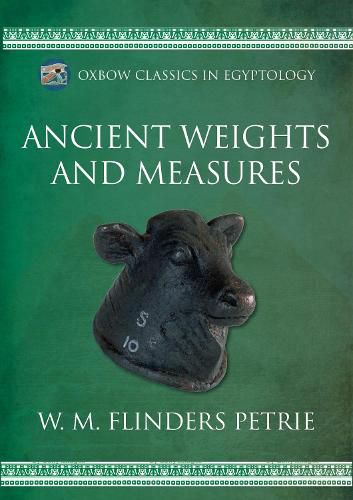Readings Newsletter
Become a Readings Member to make your shopping experience even easier.
Sign in or sign up for free!
You’re not far away from qualifying for FREE standard shipping within Australia
You’ve qualified for FREE standard shipping within Australia
The cart is loading…






Facsimile of volume of detailed catalogs prepared by Flinders Petrie of ancient weights and measures based on examination of over 4000 Egyptian weights within his collections. Eight standards have been identified and are described. The text discusses forms, multiples and fractions of standard weights, materials, and evidence for the adoption of different standards. A much smaller collection of steelyards, measures of capacity, lineal measures, and balances is also described and illustrated. AUTHOR: Sir William Matthew Flinders Petrie (1853?1942) was a pioneer in the field of 'modern' archaeology. He introduced the stratigraphical approach in his Egyptian campaigns that underpins modern excavation techniques, explored scientific approaches to analysis and developed detailed typological studies of artefact classification and recording, which allowed for the stratigraphic dating of archaeological layers. He excavated and surveyed over 30 sites in Egypt, including Giza, Luxor, Amarna and Tell Nebesheh.
$9.00 standard shipping within Australia
FREE standard shipping within Australia for orders over $100.00
Express & International shipping calculated at checkout
Facsimile of volume of detailed catalogs prepared by Flinders Petrie of ancient weights and measures based on examination of over 4000 Egyptian weights within his collections. Eight standards have been identified and are described. The text discusses forms, multiples and fractions of standard weights, materials, and evidence for the adoption of different standards. A much smaller collection of steelyards, measures of capacity, lineal measures, and balances is also described and illustrated. AUTHOR: Sir William Matthew Flinders Petrie (1853?1942) was a pioneer in the field of 'modern' archaeology. He introduced the stratigraphical approach in his Egyptian campaigns that underpins modern excavation techniques, explored scientific approaches to analysis and developed detailed typological studies of artefact classification and recording, which allowed for the stratigraphic dating of archaeological layers. He excavated and surveyed over 30 sites in Egypt, including Giza, Luxor, Amarna and Tell Nebesheh.